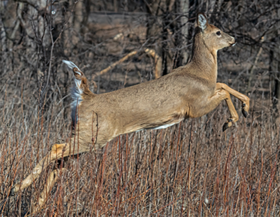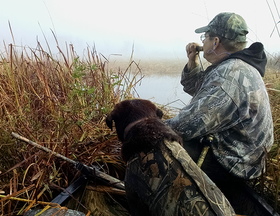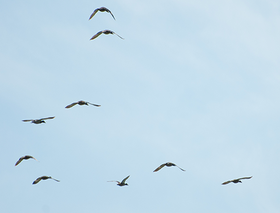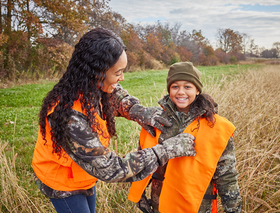|
Sept. 22, 2022
Stay informed! Here?s a summary of upcoming wildlife and habitat management activities and ways you can discover, explore and experience Minnesota?s outdoors.

Deer hunters: Please share your wildlife observations
With archery deer season underway and scouting for the upcoming firearms deer season starting in earnest, now is an ideal time for hunters to start using the DNR?s online log for deer and wildlife sightings. The DNR uses the results to compare what hunters report to population estimates that are a baseline for managing wildlife.
Hunters can enter information on the DNR website about wildlife they see while hunting including deer, turkey, bear, fisher and other species. Hunters also will be able to report specific information about any deer they harvest, including antler size.
Photo courtesy of?David Riewe? ? ? ?
|

Back to the marsh!
Minnesota?s regular waterfowl season opens a half-hour before sunrise on Saturday, Sept. 24, with the same regulations as last year. Minnesota has three waterfowl hunting zones ? north, central and south ? that share the Sept. 24 season opener but have varying end dates. The central and south zones also have a mid-season closure Oct. 3-7.
Hunters should check the DNR waterfowl hunting webpage for complete information including season dates, regulations, a waterfowl identification guide and weekly waterfowl migration reports. Waterfowl hunting regulations are also available in Hmong, Karen, Somali and Spanish on the DNR website.
|

Precautions hunters can take for avian influenza
The DNR is advising waterfowl hunters to take precautions for avian influenza when handling harvested birds to minimize the risk of spreading the virus. The virus poses a low risk to humans but can be spread by contact with sick birds and by hunting equipment. The U.S. Fish and Wildlife Service makes these recommendations for hunters:
- Do not handle or eat sick game.
- Field dress and prepare game outdoors or in a well-ventilated area.
- Wear rubber or disposable latex gloves while handling and cleaning game.
- When done handling game, wash hands thoroughly with soap or disinfectant, and clean knives, equipment, and surfaces that came in contact with game.
- Do not eat, drink, or smoke while handling animals.
- All game should be thoroughly cooked to an internal temperature of 165 degrees Fahrenheit before being consumed.
|

In a change, USDA allows hunter-harvested birds into U.S. from Canada
Hunter-harvested, unprocessed wild game bird meat or carcasses that originate in or go through Canada will be permitted to enter the United States, per a Sept. 12 update by the U.S. Department of Agriculture?s Plant and Animal Health Inspection Service. The update lifts some restrictions that the USDA made effective Sept. 2. Hunters are allowed to import hunter-harvested wild bird meat or carcasses from or going through Canada, under several conditions, and hunters should carefully review those conditions on the USDA website.
|

Teach a kid to hunt small game this weekend
Getting youth outdoors in pursuit of squirrels, rabbits and other small game is the focus of Take a Kid Hunting Weekend Saturday, Sept. 24, through Sunday, Sept. 25. This weekend, adult Minnesota residents accompanied by a youth younger than age 16 may hunt small game without a license, although they must comply with open seasons, limits and other regulations.
Anyone who wants to learn how to hunt can find helpful how-to guides on the DNR website, and a recorded webinar about how to get started small game hunting. Small game hunting regulations are available at the DNR small game hunting webpage.
|

DNR webinars cover North Shore birding, fishers
We?ve got webinars coming up covering birding on the North Shore of Lake Superior, and fishers. The webinars are free and registration is required.
The first webinar is at noon, Wednesday, Sept. 28. Lake Superior and the North Shore create a natural funnel that birds follow during their annual fall migration. Margie Menzies, education program director with Hawk Ridge Bird Observatory, will discuss fall bird migration near Lake Superior and the observatory?s fall bird count.
The second webinar is at noon, Wednesday, Oct. 5. Learn about fishers, secretive members of the weasel family found in Minnesota forests. John Erb, wildlife research biologist, and Blane Klemek, wildlife manager, will cover fisher life history, management and harvest opportunities.
|
|
